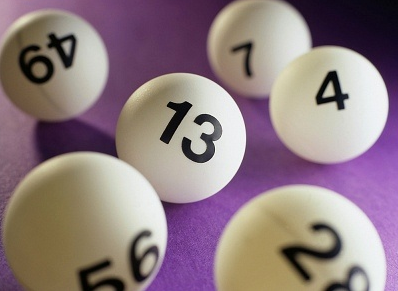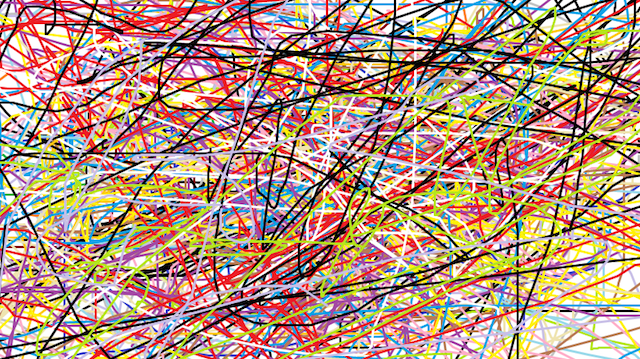After you read about our keno system, you'll never look at the keno the same way again!
Let me ask you a question. Which bet would you rather do?
-Guessing six keno numbers between 1 and 80?
or...
-Guessing six keno numbers between 1 and 10?
Incredible as it seems, most WINNING KENO/LOTTERY NUMBER PICKS can be mathematically represented as numbers between 1 and 10!
HOW CAN I WIN KENO WITH THESE NUMBERS?
It's actually very simple. The idea occurred to me when I thought about how a computer software program would store a winning lotto, winning keno or winning lottery number on disk. Storage space is always an issue with computers, so data compression is used whenever possible. To compress a lotto number pick, the software might store the "delta" of each number instead of the lotto number itself.
What's a delta? The delta is the difference between a number and the previous number.
For example, look at this winning lotto number:
3-9-18-19-27-33
Now here is the same number, represented as deltas:
3-6-9-1-8-6
All the numbers are smaller, yet still represents, and can be converted back into the same winning numbers in lottery! I created this number by subtracting each of the lotto numbers from the number right before it. The first number is still three because there is no number previous to three. For the second number, 9 - 3 = 6, third number, 18 - 9 = 9, fourth number, 19 - 18 = 1, fifth number, 27 - 19 = 8 , and sixth number, 33 - 27 = 6. To turn the delta numbers back into the original winning lotto number or keno number, we do a series of simple additions, always adding the result of the addition just done to the next number in the series: The first number is 3, second number, 3 + 6 = 9, third number, 9 + 9 = 18, fourth number, 18 + 1 = 19, fifth number,19 + 8 = 27, sixth number, 27 + 6 = 33.
WHAT DOES THIS MEAN?
It means that you can pick lotto numbers and keno numbers by guessing numbers between 1 and 10 instead of 1 and 80! Number deltas higher than 10 can occur, but 95% of the time they don't!
WHAT'S HAPPENING? WHY DOES THIS WORK?
It works because the smaller numbers represent the typical distribution of winning keno and lotto numbers. In other words, in a keno game, the numbers are usually (95%+) spaced 1-10 digits from each other. Since this spacing stays somewhat consistent from winning number to winning number, our scheme to represent them as smaller delta numbers works. By guessing deltas that follow our rules instead of guessing the keno or lotto numbers themselves, your guess will have the same number distribution characteristics as other winning numbers. Does this give you an advantage? Well, read on.
WAIT! THERE'S MORE! IT GETS BETTER!
I studied the distribution of delta numbers in a year's worth of winning keno numbers from Massachusetts State Lottery. When I did this, I discovered something exciting but at first, truly puzzling. Over long periods of time, numbers are randomly distributed, but in smaller increments there are bias towards hot numbers!

Hard to believe? Check out some of the raw data yourself below.
This chart shows the distribution of delta numbers in several months worth of Massachusetts KENO drawings:
| Delta | Occurrences | Percentage | Total Percentage |
| 1 | 43058 | 24.94% | 24.94% |
| 2 | 32769 | 18.98% | 43.93% |
| 3 | 24863 | 14.40% | 58.33% |
| 4 | 18753 | 10.86% | 69.20% |
| 5 | 13892 | 8.05% | 77.24% |
| 6 | 10532 | 6.10% | 83.35% |
| 7 | 7755 | 4.49% | 87.84% |
| 8 | 5661 | 3.28% | 91.12% |
| 9 | 4206 | 2.44% | 93.55% |
| 10 | 3153 | 1.83% | 95.38% |
| 11 | 2246 | 1.30% | 96.68% |
| 12 | 1627 | 0.94% | 97.62% |
| 13 | 1152 | 0.67% | 98.29% |
| 14 | 890 | 0.52% | 98.81% |
| 15 | 644 | 0.37% | 99.18% |
| 16 | 437 | 0.25% | 99.43% |
| 17 | 278 | 0.16% | 99.60% |
| 18 | 211 | 0.12% | 99.72% |
| 19 | 159 | 0.09% | 99.81% |
| 20 | 87 | 0.05% | 99.86% |
| 21 | 67 | 0.04% | 99.90% |
| 22 | 52 | 0.03% | 99.93% |
| 23 | 33 | 0.02% | 99.95% |
| 24 | 21 | 0.01% | 99.96% |
| 25 | 14 | 0.01% | 99.97% |
| 26 | 7 | 0.00% | 99.97% |
| 27 | 12 | 0.01% | 99.98% |
| 28 | 4 | 0.00% | 99.98% |
| 29 | 3 | 0.00% | 99.98% |
| 30 | 2 | 0.00% | 99.98% |
The Percentages Don't Lie
It turns out that nearly 70% of the time, a delta calculated from a winning number will be FOUR or less! 58% of the time, the delta will be THREE or less! In fact, a delta of ONE is the single most occurences, occurring almost 25% of the time. The predominance of the number ONE means that adjacent number pairing in winning keno numbers must be quite common (and it is quite common, just look at any series of winning keno numbers.)
I also found that the first number drawn will be lower than 10 - 95.3% of the time! So if we can find the first starting number from 1-9, and then use the percentages of delta between numbers, we can generate a higher percentage of possibilities than simply generating completely random numbers.
This means that most of the Delta numbers you will be guessing can be picked from an even smaller set of numbers! Why is that?
Well, there are valid statistical reasons this happens. When you consider that the sum of all the Deltas have to add up to the highest keno digit (80), it's apparent that there isn't room for many large deltas. But doesn't explain the entire effect. The excess of small delta numbers, and especially the predominance of ONE, is not obvious in the keno numbers themselves, but the delta calculation reveals the pattern.
With this knowledge, we can look at any game and we should see 25% of the numbers one number apart. That means that out of 20 numbers drawn, approximately 5 numbers should be "runners" or 1 number apart. You can take this against any results set and see for yourself.
Here is an example:
Draw #1652971: 04-22-27-29-30-33-34-35-37-39-41-43-51-57-63-72-73-76-78-80
In these results, there were 4 "runners: 29-30, 33-34, 34-35, 72-73
Using this knowledge, we can more easily select number combination possibilities.
Combination of Systems
No one system is perfect and you will not win all of the time. But when we combine this knowledge with two other techniques, the result is what you will find on my site.



